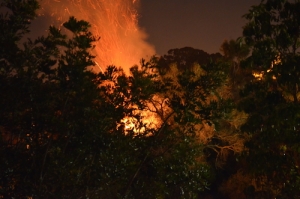
By Nadin Abbott and Tom Abbott
Photos Tom Abbott and Nadin Abbott
Reprinted with permission from Reporting San Diego
November 2, 2014 (San Diego) - Reporting San Diego sat down with Captain Ken Bortisser, the Public Information Officer of the Monte Vista Unit. Monte Vista is the name of the San Diego Administrative CAL FIRE unit. We talked about fire issues.
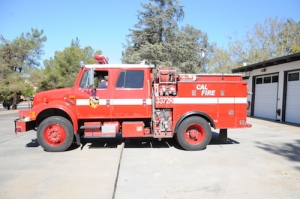 At times the best way to look at things is where they came from. CAL FIRE started in 1885, but it was not the agency we know today. At the time the country was having discussions of whether we needed forestry experts, and the California legislature decided to create a Department of Forestry for the state. Nowhere in that plan were fuel management, or firefighting, or urban search and rescue, the latter is something CAL FIRE does in other areas of the state.
At times the best way to look at things is where they came from. CAL FIRE started in 1885, but it was not the agency we know today. At the time the country was having discussions of whether we needed forestry experts, and the California legislature decided to create a Department of Forestry for the state. Nowhere in that plan were fuel management, or firefighting, or urban search and rescue, the latter is something CAL FIRE does in other areas of the state.
Back then the department had mostly one mission, to educate people in forestry issues and do extremely basic management of the forests. There was one aspect given to early forestry officials that does translate to the modern day era, in 1887 rangers were given police powers to enforce the few laws the state had in place.
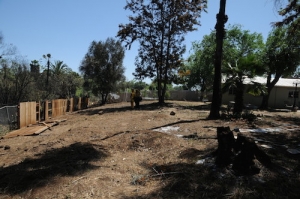 It was not until 1905 that the department got their first taste of fire suppression when they got the authority to do it. It was not until 1929 that the department got their first fire engines, and in 1943 the first full time firefighters were hired, and importantly, the first honor camps using low risk prisoners were created.
It was not until 1905 that the department got their first taste of fire suppression when they got the authority to do it. It was not until 1929 that the department got their first fire engines, and in 1943 the first full time firefighters were hired, and importantly, the first honor camps using low risk prisoners were created.
http://www.calfire.ca.gov/about/about_calfire_history3.php
CAL FIRE has come a long way, today the department responds on average to 5,600 wild land fires statewide every year, which burn over 172,000 acres. In San Diego the department is known for it's wild land response, but the department is a multi response, multi faceted agency, having not just wild land firefighters, but also rescue personnel, hazardous materials, firefighters with the capacity to respond to just about any kind of emergency, The department has entered into cooperative agreements with multiple municipalities across the state.
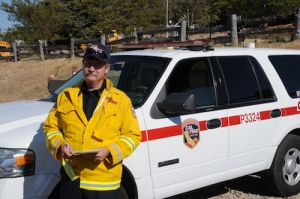 So how about San Diego? In San Diego the department responded to 482 wildfires, and 27,248 other emergencies in 2013. These other emergencies included structure fires, rescues, medical emergencies, hazardous materials spills, and confined space. The budget for the Monte Vista unit, in 2013 was $19 million.
So how about San Diego? In San Diego the department responded to 482 wildfires, and 27,248 other emergencies in 2013. These other emergencies included structure fires, rescues, medical emergencies, hazardous materials spills, and confined space. The budget for the Monte Vista unit, in 2013 was $19 million.
Moreover, the San Diego Unit has 18 stations that are CAL FIRE, but also operate, under contract, another 35 stations. They have 26 Engines, including four reserve CAL FIRE engines, and 37 other engines operated under contract.
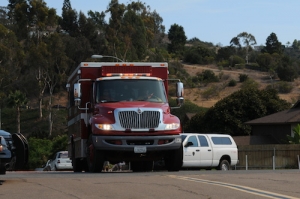 There are other pieces of equipment the Unit has, such as a mobile kitchen, four camps, and a mobile communications unit. The air unit operates 4 airtankers, and two helicopters under a cooperative agreement with the Sherriff’s office, with a third authorized by the Board of Supervisors.
There are other pieces of equipment the Unit has, such as a mobile kitchen, four camps, and a mobile communications unit. The air unit operates 4 airtankers, and two helicopters under a cooperative agreement with the Sherriff’s office, with a third authorized by the Board of Supervisors.
According to the San Diego County Annual report, the response time in rural unincorporated areas of the County, where CAL FIRE was contracted as part of the creation of the County Fire Authority, in the State Responsibility Area, is 10.5 minutes, the national standard for rural areas is 20 minutes. Moreover, the annual report has announced that there will be a new fire station in Boulevard, which is under construction.
http://www.sdcountyannualreport.com/index.html
http://www.countynewscenter.com/news/county-breaks-ground-new-boulevard-fire-station
Another question that a lot of people have is what happens when there is a fire in another area of the state and fire units leave? First off, and we saw this during the May fires; no area is left without fire crews. During that fire, the Aurora fire broke out in Lakeside, and local Santee, Lakeside and CAL FIRE units responded.
Captain Bortisser explained that every morning fire departments send a list to the overall regional commander a list of units that they could spare if the call comes from other areas of the state. So if San Diego Fire can spare five engines, and CAL FIRE can spare four and Heartland can spare 6 engines that is all there is to form strike teams. (We are only listing a few of the departments in the County)
This is a critical point; we send help, when they need help. They send help when we need help. But at no point are resources left under a critical point. Moreover, during critical fire weather events, such as Santa Anas, fire departments go into higher staffing patterns, including manning reserve engines, since we are in the cul-de-sac of the state, units tend to be prepositioned in Orange County and even Riverside, they can respond to any emergency across the southland. When we get those winds, usually so does Orange County and Riverside.
LOCAL CONTROL
One of the most misunderstood aspects of CAL FIRE operations in San Diego County is how exactly they come in to an independent fire district, or how they work with the County Fire Authority. Many people believe that this is a takeover from Sacramento, and the loss of any decision capacity at the local level.
In reality the local agency asks for proposals for a contract when the local body believes that a cooperative agreement will help improve operations and response times, and result in savings. CAL FIRE is not the only agency that can present proposals. When they win a contract, such as the County Fire Authority, the standards of service are set up in the contract by the local agency.
If the local agency wants to staff a fire unit with five personnel, CAL FIRE will put on board five personnel. If they say the response time has to be at national standards for the region (these standards vary depending on whether this is an urban area, a semi urban area, or a rural area), CAL FIRE will meet those standards.
This is no different from the Sheriffs Office responding in the City of Santee, which has no police department of it’s own. The Sheriffs is under the direction of the City Council. For CAL FIRE it is the same story. The local fire board, or in the case of the County Fire Authority, the local County board of supervisors, has the ultimate authority.
What does indeed happen is that the firefighters do go into State employment and change their patches but it is the same exact personnel who were serving the area before this happened, and they continue to serve the community.
CEDAR FIRE AND IMPROVEMENTS:
The Cedar fire was one of the most traumatic events in San Diego History, and one of the most damaging fires, until then. There are a couple items to highlight, not that they are the only improvements. They are just examples of how far mutual aid, and interagency cooperation has improved.
In 2003 different fire agencies could not talk to each other. They were simply not in the same radio channel. It not only made fire fighting more challenging, but it also made it that much more dangerous. It really hurt what firefighters call situational awareness.
This major issue has been fixed, and these days responding agencies, even from outside the state, can tap into the same radio channels and talk to each other.
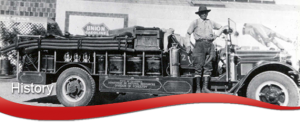 Another aspect that has improved a lot since 2003 is interagency cooperation. While the early interagency agency cooperation was developed after the 1970s wild land fires, it has become very good across the county. During the May fires, the incident went into unified command very fast, and remained such until the incident was over. Meaning, there was one person in charge.
Another aspect that has improved a lot since 2003 is interagency cooperation. While the early interagency agency cooperation was developed after the 1970s wild land fires, it has become very good across the county. During the May fires, the incident went into unified command very fast, and remained such until the incident was over. Meaning, there was one person in charge.
Another matter to highlight is that there is deep cooperation with both the Marine and United States Navy personnel in the county. This is a unique in the Continental United States, and was spearheaded by CAL FIRE. During the May Fires military personnel joined the fight within 24 hours. This quickly augmented the aerial firefighting capability with 20 military helicopters.
The May fires also showed San Diegans something else, these are not rural, distant events, We have areas of the county that have not burned in 40 and 50 years, such as Tecolote Canyon in San Diego.
On the other hand, some areas that burned in the recent past, have had growth come back. For example: Wildcat Canyon in Lakeside has seen the brush grow back, almost to the levels before the Cedar fire. The May fires did not happen in the Far East County. They happened in urban settings near the coast.
HOW CAN YOU HELP CAL FIRE, OR YOUR LOCAL FIRE AGENCY?
Ninety-five percent of wildfires are human caused. Whether it is a spark from a vehicle, target shooting over dry brush, fireworks, using week whackers. It really does not matter; it is pretty easy to start a fire in the right conditions. So always heed the warnings and be safe.
Be ready to leave when you are told you need to leave. The middle of an emergency is not the time to decide what you take. CAL FIRE has this extremely useful video on Ready Set Go. It comes down to this: Have a plan, practice the plan, and be ready to leave.
Maintaining a hundred feet defensible space.
It is the law to maintain a hundred feet defensible space in California if you live in the rural areas. If you live in what the fire department calls wild and urban interface area is not a bad idea either.
This means making sure that there is a place for firefighters to defend your property. Fire Department personnel will do a structure triage when they get to an area that is burning. Those structures that they can defend, they will.
One issue that comes often, when you live in rural areas, is how to safely dispose of mulch and tree limbs. CAL FIRE has an extremely useful video on how to do it safely. Follow these guidelines and you should be fine.
We also asked what you should do when calling 911. Fire Department personnel know that if you have to call 911, this is a really bad day. They also know that when you call 911 emotions will be running high.
First thing, and it is easier said than done, remain calm. Answer all the questions that the dispatcher asks of you, in a calm manner. Also, especially if you are calling from a cell phone, make sure to give them the address including the city. If you are calling from a cell phone, the dispatch center is not getting your address like when they do when you use a landline and it is first answered by the Sherriff’s office or the California Highway Patrol, so make sure you tell them if you are calling from Second Avenue that you are in Julian, Ramona, El Cajon or Downtown San Diego. All of these have a second avenue. Add what street number you are at.
WHERE DOES YOUR MONEY GO?
One concern many people have is where does money go? To give readers an idea of where money goes, how much does it cost to buy a new fire truck? Realize, fire trucks come in different types. Some are used for city firefighting, others for brush fire fighting. Some have larger water tanks, others have smaller water tanks, and all have to be built on spec.
It is not like I can go to the local Ford dealership and order yourself a fire truck. Moreover, they have to be ordered months in advance. So the best answer, and this is without hoses, and ladders and all that, fire truck costs hundreds of thousands of dollars. This is without hoses or other equipment.
What you can nail far better, is the cost to outfit a firefighter for both structural fire fighting and wild land firefighting, and this does not include the Scott Air Pack. Just the clothes, and the cost is $1500 for wild land fire, and %2800 for a structure fire. Mind you, each of them is unique and you cannot use the same pair of boots. According to Bortisser they also have two of each, since one is a backup for whenever the other one gets torn, broken, or bled on.
Moreover, the equipment has to be replaced because nomex loses it’s effectiveness. So what is the equipment? A wildland firefighter will wear, pants, boots, a T-shirt, a jacket, and gloves. The structural turnout gear is similar, but the boots are different, the gloves are different, and the pants and jacket are also thinker and heavier. Perhaps, the only thing that a firefighter will be able to wear for both is the T-shirt.
This list does not include a few other pieces of equipment, such as the radios, the helmets, the Scott Air pack, or the extra air bottles.
Finally, only because it is in the news, whiles unlikely that a fire Unit will come across an Ebola patient in the county, never say never, and protocols are in development. These are based on a threat matrix for personnel. So it is not something that is discounted, planning is in place.
As a former Emergency worker, as the early history of CAL FIRE shows, there is only one constant in Emergency Services, and that is change. CAL FIRE has seen a lot of change in more than a century. It will see more as the years pass.












Comments
edited out
edited out
NO!
I am so tired of hearing this.. "In 2003 different fire agencies could not talk to each other."
There are 2 major radio systems in San Diego for fire. The VHF systems ( Cal Fire and Federal Fire ) that is basically the same as it's been since the 60's. The RCS 800 system that is basically the same as it has been since installed in the late 90".
THERE ARE NO NEW "RADIO CHANNELS ON THESE SYSTEMS. Certainly no new channels since 2003.
There have been improvements to the infrastructure of both systems and improvements to the coverage of the 800 in the rural areas since 3003 but NO NEW CHANNELS.
Inter agency fire frequencies and equipment in San Diego have been coordinated since the 70's. The problem is, have the people running the fire departments been training their people on how to use these frequencies? Probably not very well.
I will add one more answer to this answer
NO!
I am sorry nadinabbott but you are very confused. VHF Fire radios in San Diego county do NOT use encryption they use standard, clear channel, frequency modulation. If you are talking about the RCS 800 System, Icom and Kenwood do NOT make radios that work on this system at all. Until EF Johnson finally made their 800 trunking radios compatible with the Motorola system a few years ago ALL 800 radios in use in San Diego County were Motorola.
As to "official reports" ? You mean like the County reports that stretched 170 some "reserve" firefighters to 550? Or the newsletter from our Supervisor Jacob last November that claimed all the rural fire stations were manned 24/7? You really believe these people can find their hind end with both hands?
I have been employed in the electronics industry since 1960 and have been supporting the VHF and 800 fire systems in San Diego County since 2001. When I tell you something is so you had better believe it!
On better thinking
More on fire communcations....
Miriam
You are doing a great job with this publication but please do not fall into the trap of trying to figure out what our elected officials are telling us. As you well know most of them are dumb as rocks on any subject but dumber still on anything technical.
Yes there have been and still are communications issues. It has to do with not spending money and not training their users. It is NOT now nor has it EVER been a issue of no frequencies available. I have been personally involved in all agency communications exercises since 2001. From then to now it is abundantly clear ALL public service agencies in this County put communications training below mopping the floor on their priority lists. It shows up every time there is a big, multi agency event. When a volunteer Amateur Radio Operator has to go over to the Sheriff command trailer and show them where the button is on the radio to make it do what they need it to do, well, you figure it out.